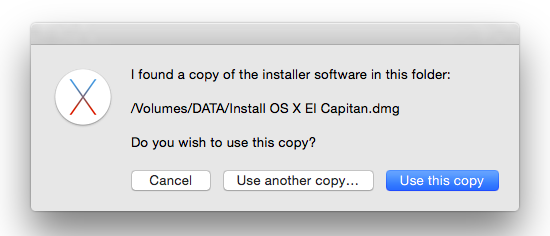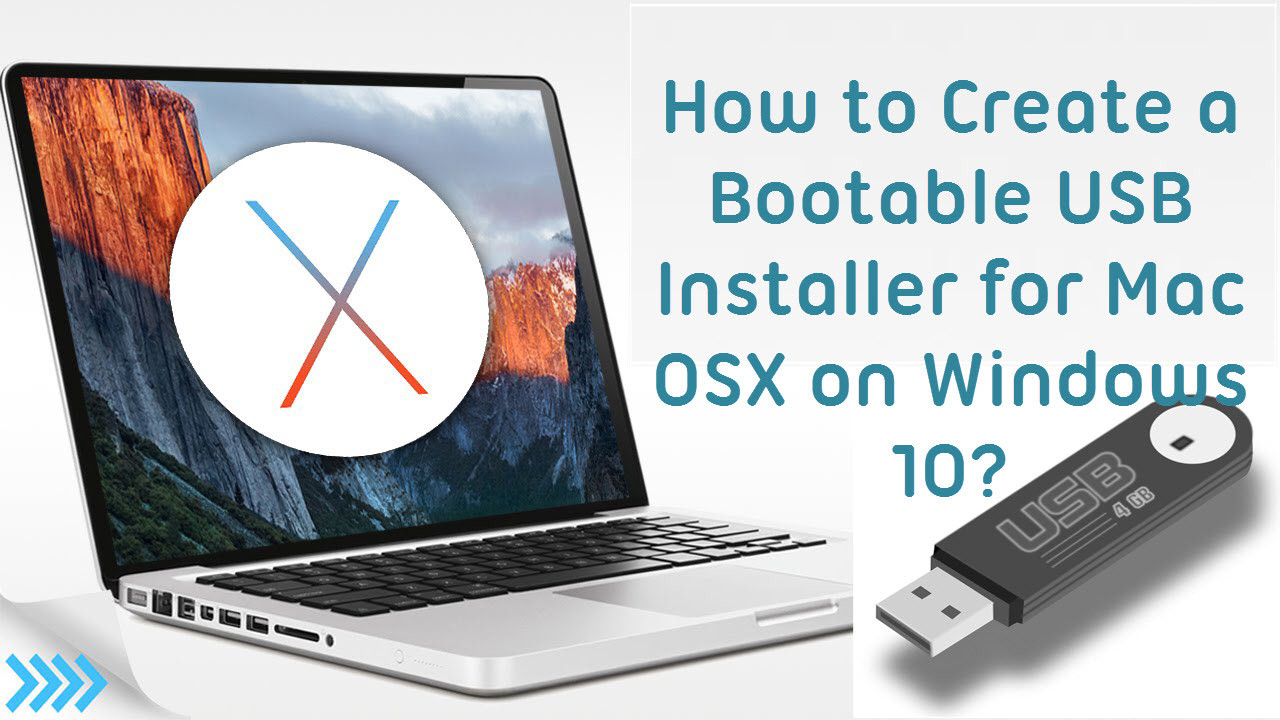Full Version Mac OS X El Capitan Free Download 10.11.6 InstallESD DMG Bootable USB Free Download Mac OS X El Capitan 10.11.6 Intel And AMD Bootable USB ISO. Create a bootable USB drive from a DMG file on. Since DiskMakerX doesn’t yet have an El Capitan option, it will name it Yosemite. In future tutorials I will show you different methods for installing OS X El Capitan on your Mac, including via Virtual Machine and on a separate partition, using this bootable drive. How to download all photos from iphone to macbook.

It's very easy to create a bootable ISO image of El Capitan, if you have aworking El Capitan system installed on your machine.
Start with going to AppStore and installing El Capitan, so you'll have anapplication named Install El Capitan in your Application list. Then, youshould follow the steps below.
There is an installation image file inside /Applications/Install El Capitan.app, named InstallESD.dmg. It's not a bootable ISO that can be usedto install the system on a virtual machine, but we'll get there. Mount thisimage to some directory by using the hdiutil tool:
The -noverify and -nobrowse options are there to make mounting operationfaster and to make sure that Finder will not automatically pop up.
Now let's create a placeholder image of our ISO file.
This can take a while.
After an empty ISO file will be created, we need to mount it:

Then, we will use asr tool to populate the contents of our new drive:
The asr tool will automatically create a new mountpoint, /Volumes/OS X Base System. We're going to put some files into this directory.
First of all, remove an invalid link that won't be needed here: 2014 flagstaff mac pop up camper manualdwnloadblock.
Instead of this link, we need a proper directory, full of package files. We'regoing to copy this directory from the ESD image that we have mounted few stepsearlier.
We're going to copy some additional installer dependencies as well.
After that, we can unmount stuff we don't need anymore:

Last step is to convert our ISO file into the UDTO format.
Done. The ElCapitan3.iso.cdr can be renamed to ElCapitan.iso, and can beused in virtualization software like VirtualBox 5.
The method described above was found on forums.MacRumors.com(permalink).Thanks to colt2!
These advanced steps are primarily for system administrators and others who are familiar with the command line. You don't need a bootable installer to upgrade macOS or reinstall macOS, but it can be useful when you want to install on multiple computers without downloading the installer each time.
What you need to create a bootable installer

- A USB flash drive or other secondary volume, formatted as Mac OS Extended, with at least 12GB of available storage
- A downloaded installer for macOS Big Sur, Catalina, Mojave, High Sierra, or El Capitan
Download macOS
- Download: macOS Big Sur, macOS Catalina, macOS Mojave, or macOS High Sierra
These download to your Applications folder as an app named Install macOS [version name]. If the installer opens after downloading, quit it without continuing installation. To get the correct installer, download from a Mac that is using macOS Sierra 10.12.5 or later, or El Capitan 10.11.6. Enterprise administrators, please download from Apple, not a locally hosted software-update server. - Download: OS X El Capitan
This downloads as a disk image named InstallMacOSX.dmg. On a Mac that is compatible with El Capitan, open the disk image and run the installer within, named InstallMacOSX.pkg. It installs an app named Install OS X El Capitan into your Applications folder. You will create the bootable installer from this app, not from the disk image or .pkg installer.

Use the 'createinstallmedia' command in Terminal
- Connect the USB flash drive or other volume that you're using for the bootable installer.
- Open Terminal, which is in the Utilities folder of your Applications folder.
- Type or paste one of the following commands in Terminal. These assume that the installer is in your Applications folder, and MyVolume is the name of the USB flash drive or other volume you're using. If it has a different name, replace
MyVolumein these commands with the name of your volume.
Big Sur:*
Catalina:*
Mojave:*
High Sierra:*
El Capitan:
* If your Mac is using macOS Sierra or earlier, include the --applicationpath argument and installer path, similar to the way this is done in the command for El Capitan.
Create Bootable El Capitan Usb From Dmg
After typing the command:
- Press Return to enter the command.
- When prompted, type your administrator password and press Return again. Terminal doesn't show any characters as you type your password.
- When prompted, type
Yto confirm that you want to erase the volume, then press Return. Terminal shows the progress as the volume is erased. - After the volume is erased, you may see an alert that Terminal would like to access files on a removable volume. Click OK to allow the copy to proceed.
- When Terminal says that it's done, the volume will have the same name as the installer you downloaded, such as Install macOS Big Sur. You can now quit Terminal and eject the volume.
Use the bootable installer
Hp presario f500 driver for mac windows 10. Determine whether you're using a Mac with Apple silicon, then follow the appropriate steps:
Apple silicon
Make Bootable Usb From Dmg Mac El Capitan
- Plug the bootable installer into a Mac that is connected to the internet and compatible with the version of macOS you're installing.
- Turn on your Mac and continue to hold the power button until you see the startup options window, which shows your bootable volumes and a gear icon labled Options.
- Select the volume containing the bootable installer, then click Continue.
- When the macOS installer opens, follow the onscreen instructions.
Create Bootable Usb From Dmg El Capitan Software
Intel processor
- Plug the bootable installer into a Mac that is connected to the internet and compatible with the version of macOS you're installing.
- Press and hold the Option (Alt) ⌥ key immediately after turning on or restarting your Mac.
- Release the Option key when you see a dark screen showing your bootable volumes.
- Select the volume containing the bootable installer. Then click the up arrow or press Return.
If you can't start up from the bootable installer, make sure that the External Boot setting in Startup Security Utility is set to allow booting from external media. - Choose your language, if prompted.
- Select Install macOS (or Install OS X) from the Utilities window, then click Continue and follow the onscreen instructions.
Learn more
For more information about the createinstallmedia command and the arguments that you can use with it, make sure that the macOS installer is in your Applications folder, then enter the appropriate path in Terminal:
Os X El Capitan Create Bootable Usb From Dmg
- Big Sur: /Applications/Install macOS Big Sur.app/Contents/Resources/createinstallmedia
- Catalina: /Applications/Install macOS Catalina.app/Contents/Resources/createinstallmedia
- Mojave: /Applications/Install macOS Mojave.app/Contents/Resources/createinstallmedia
- High Sierra: /Applications/Install macOS High Sierra.app/Contents/Resources/createinstallmedia
- El Capitan: /Applications/Install OS X El Capitan.app/Contents/Resources/createinstallmedia
Create Bootable Usb From Dmg Mac El Capitan
A bootable installer doesn't download macOS from the internet, but it does require an internet connection to get firmware and other information specific to the Mac model.
Comments are closed.